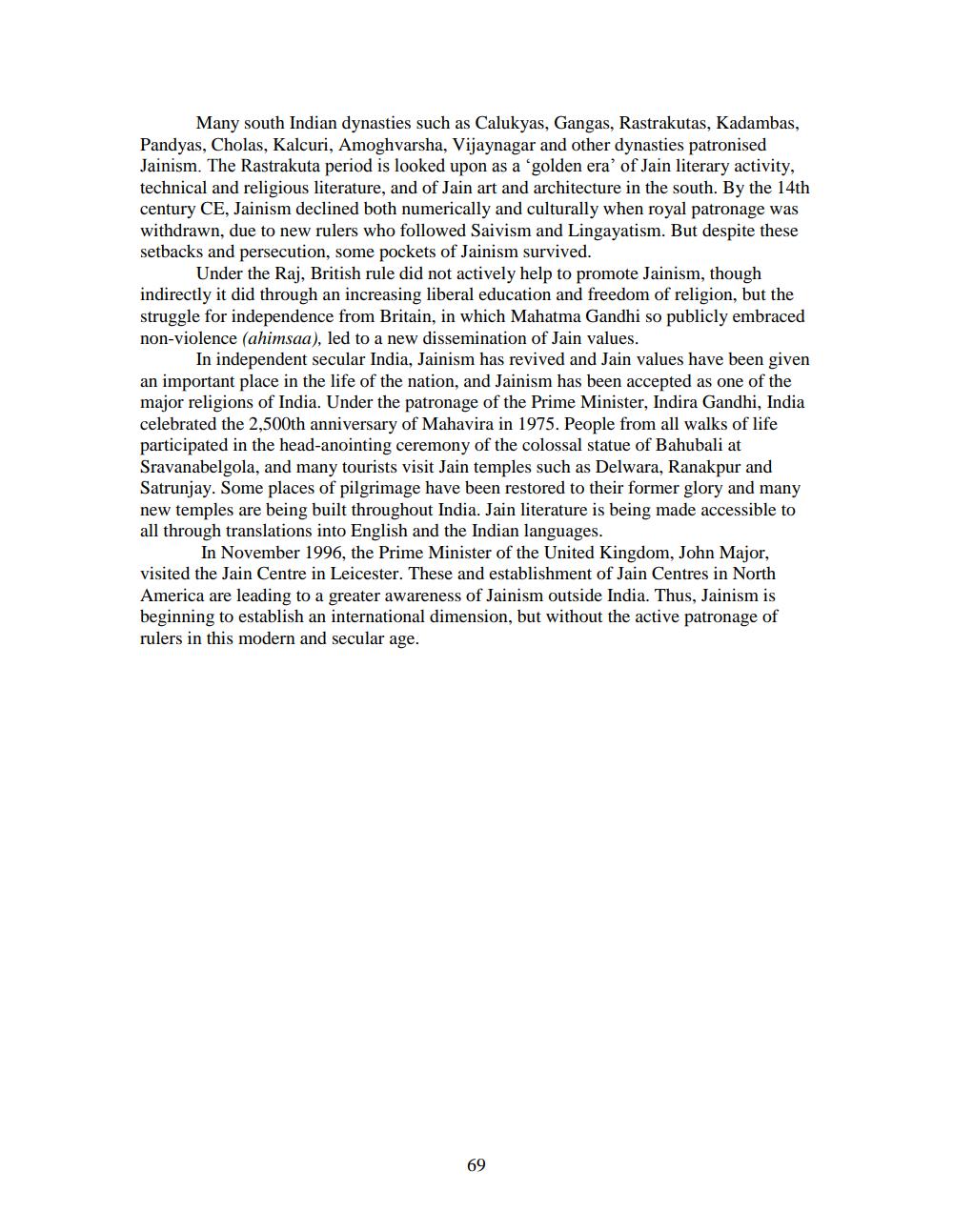________________
Many south Indian dynasties such as Calukyas, Gangas, Rastrakutas, Kadambas, Pandyas, Cholas, Kalcuri, Amoghvarsha, Vijaynagar and other dynasties patronised Jainism. The Rastrakuta period is looked upon as a 'golden era' of Jain literary activity, technical and religious literature, and of Jain art and architecture in the south. By the 14th century CE, Jainism declined both numerically and culturally when royal patronage was withdrawn, due to new rulers who followed Saivism and Lingayatism. But despite these setbacks and persecution, some pockets of Jainism survived.
Under the Raj, British rule did not actively help to promote Jainism, though indirectly it did through an increasing liberal education and freedom of religion, but the struggle for independence from Britain, in which Mahatma Gandhi so publicly embraced non-violence (ahimsaa), led to a new dissemination of Jain values.
In independent secular India, Jainism has revived and Jain values have been given an important place in the life of the nation, and Jainism has been accepted as one of the major religions of India. Under the patronage of the Prime Minister, Indira Gandhi, India celebrated the 2,500th anniversary of Mahavira in 1975. People from all walks of life participated in the head-anointing ceremony of the colossal statue of Bahubali at Sravanabelgola, and many tourists visit Jain temples such as Delwara, Ranakpur and Satrunjay. Some places of pilgrimage have been restored to their former glory and many new temples are being built throughout India. Jain literature is being made accessible to all through translations into English and the Indian languages.
In November 1996, the Prime Minister of the United Kingdom, John Major, visited the Jain Centre in Leicester. These and establishment of Jain Centres in North America are leading to a greater awareness of Jainism outside India. Thus, Jainism is beginning to establish an international dimension, but without the active patronage of rulers in this modern and secular age.
69




